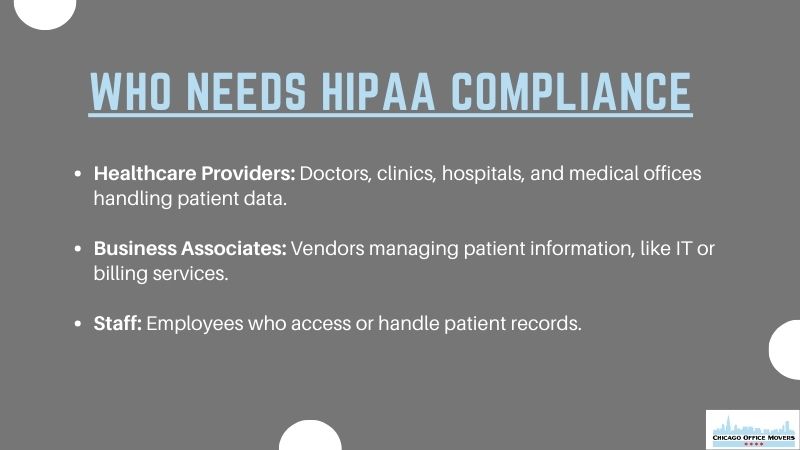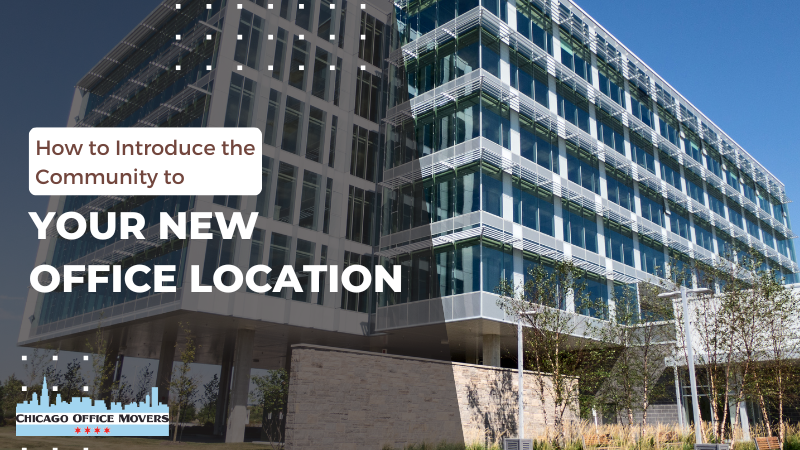
Step-by-Step Guide to Move Your Business to a Different State
Step-by-Step Guide to Move Your Business to a Different State
Written by Kari-Ann on . Posted in Corporate Relocation, Moving Tips
Relocating a business across state lines is a complex undertaking that demands months of careful planning, extensive paperwork, and proper registration in the new state. For companies unsure of where to start, this step-by-step guide provides a clear path to a smooth and successful move.
This article also serves as a business relocation checklist to help companies stay organized during the process of an interstate business move.
Step 1: Know the Reason Behind the Move
Businesses relocate for a wide variety of reasons. Some companies seek to be closer to a highly skilled talent pool while others choose to move out of expensive cities and into more affordable suburbs. New markets appeal to growing companies and provide access to target customers. Tax incentives impact profit margins and tax rates are determined by location, which is why many Illinois companies move operations to states such as Indiana, Texas, or Florida. Commute times may influence employees’ decisions to stay with the company or seek another that’s in proximity. Businesses frequently move out of areas that have become unsafe or unhealthy.
Step 2: Find a Suitable Location
The success of the business relies in part on its location. The ideal location should be accessible to target customers, resources, and a qualified workforce, all of which impact operational costs and efficiency as well as revenue. A prestigious location markedly influences brand perception. Choose a commercial property that offers a lease with terms that work to support the needs of the business. For example, a business owner may negotiate a short lease for increased flexibility rather than a multi-year lease that provides stability. It is always worthwhile to review state-specific regulations and consult resources such as the SBA’s relocation guidelines when choosing a new home for the company.
Step 3: Create a Budget
Relocating a business to a new state is expensive. Create a budget that outlines the costs associated with the move, such as hiring a commercial moving company. The farther the distance, the higher the price of the move will be, since moving companies may charge by mileage for interstate moves. The average cost of cross-country commercial moves ranges from $10,000 to over $30,000, with size and complexity having a major impact. Businesses often budget five to ten percent of their annual operating costs for a relocation. Charges may also be added for services such as elevator access and long carries, and IT and data cabling can significantly increase the overall expense.
Step 4: Relocate the Business Entity
Incorporated businesses must change their state of formation. The options available to them are dissolving the current LLC in its original state of incorporation and forming a new LLC in the new state, merging the old LLC with an LLC formed in the new state, or filing a foreign qualification. Dissolving the existing business requires closing it in its state of incorporation. If the business neglects to formally close, the state of incorporation deems it still active; as a result, the company owner must continue to pay taxes, state fees, and file annual reports. A merger is a second option, whereby the business owner forms an LLC in the new state and then merges the old LLC into the new company. After the merger, the old LLC no longer exists. It’s important to follow the guidelines, such as filing articles of merger through the new state’s Secretary of State office. When a company plans to relocate but intends to continue doing business in the old state, filing a foreign qualification may be the best choice. This option allows the company owner to retain the old LLC and register it as a foreign LLC in the new state. Approval for these filings usually takes between two and four weeks.
Step 5: Move a Sole Proprietorship
Moving a sole proprietorship, on the other hand, requires a few different steps. Cancel the local business licenses and permits and apply for ones at the new location. Pay any outstanding fees and employment taxes. Close the bank account associated with the old business, if it isn’t worldwide.
If the sole proprietorship has a DBA (doing business as), withdraw the name from the Secretary of State’s office. At the new location, apply for a DBA. Inform the IRS of the relocation so that the updated business address is on file with the Federal Tax ID Number.
Step 6: Provided Updates
Once the new location is secured, it’s time to provide updates to all relevant parties. Notify the employees of the new business office location as well as the timeline for the move. Keep customers updated via social media, notices on the front door or company newsletters.
Update Google Maps and Google My Business as well as marketing materials, such as business cards, brochures, and the corporate website. If necessary, order an interior or exterior business sign to display on the new building or inside the lobby.
Step 7: Schedule the Move
Research several potential commercial movers before settling on the right one. The moving company should have good online ratings, a license, and insurance. Consider a commercial mover with experience in the relevant industry, as they understand their customers’ unique relocation needs. A mover’s availability is usually limited from spring to fall, so try to schedule the move during off-peak seasons, such as the winter months, for better rates and flexibility. The beginning of the week and middle of the month are generally less busy for commercial movers. Many Illinois companies that relocate operations out of state schedule their moves months in advance to ensure the best availability.
Commercial Moving Services from Chicago Office Movers
When your company is relocating to greener pastures, you’ll need a reputable commercial mover to ensure you reach the destination in a timely and efficient manner. Many Illinois businesses relocating to states like Indiana, Texas, and Florida have relied on Chicago Office Movers because of our proven track record with interstate business moves. We offer comprehensive commercial moving services that will take your company from point A to point B as seamlessly as possible. Included in our services is professional help with planning the corporate move, packing and unpacking, as well as short- and long-term storage in our secure facilities.
Our moving crews are available no matter where your new location will be. We provide local, long-distance, and international relocation services. All moving crews are licensed, trained, and background-checked so you can be confident in the secure and confidential handling of business goods. Work with Chicago Office Movers, like countless major area businesses have. Given our industry experience moving everything from fragile IT systems to bulky machinery, we can tackle any move with expertise. Call our Chicago or Elk Grove Village, Illinois, office today at 312-244-2246 to obtain a free estimate.
Frequently Asked Questions
How do you budget for unexpected expenses during a move?
A good rule of thumb is to allocate 10–15% of your overall moving budget for unanticipated costs. Track your spending carefully and update your plan weekly leading up to the move to avoid surprises.
Are there tools or software to help track hidden moving costs?
Yes. Accounting software like QuickBooks or Xero can help track expenses, while project management tools such as Asana or Trello can manage timelines and tasks. Energy monitoring systems or IT tracking tools can also identify areas where hidden costs may occur.
Do insurance policies cover business moves?
Not always. Standard business insurance may not cover losses during transit or temporary storage. Check with your provider and consider supplemental coverage for sensitive equipment, inventory, or critical documents.
Can temporary workspace solutions be cost-effective?
Sometimes renting coworking spaces or temporary offices is cheaper than delaying operations. Consider this option if your new office isn’t fully ready for move-in.
Contact Us
Related Services
- Corporate Moving
- Commercial Moving
- Reliable Commercial Storage
- Specialty Commercial Moving
- Furniture Assembly
- Movers for Office Renovation
- Machinery Moving
- Library Moving
- Lab Moving
- Server Room Moving
- Office Movers in Rosemont, IL
- Commercial Moving in Bolingbrook, IL
- Commercial Movers in Naperville, IL
- Commercial Movers in Des Plaines, IL
- Commercial Moving Services in Aurora, IL
- Schaumburg Office Movers
- Commercial Moving Services in Oakbrook, IL
- Commercial Movers in The North Shore
- Commercial & Office Moving Services Deerfield, IL
- Commercial & Office Movers in Hinsdale, IL
- Elk Grove Village Commercial Movers
- Furniture, Fixtures and Equipment Services
- Commercial Mover in Lincolnshire, IL
- Office Packers in Lincolnshire, IL
- Office Decommissioning in Lincolnshire, IL
- Professional Movers in Downers Grove, IL
- Moving Company in Chicago, IL

Director of Marketing & Development
Office: (847) 621-5176
Cell: (312) 497-3203
At Chicago Office Movers, Kari-Ann is our Director of Marketing & Development. As the master of visibility, she is responsible for all things Branding and Marketing related. Kari-Ann comes to us with experiences in Marketing for a multi-brand and multi-location company, the service industry, non profit marketing event planning and fundraising, and retail management. She is the Chair of the Board for the Schaumburg Business Association 2021 & 2022, a member of the Elk Grove Village Chamber Board of Directors, and past chair and top fundraiser for the Northwest Suburban Walk To End Alzheimer’s.
Kari-Ann received her Bachelor of Business Administration in Marketing from Western Michigan University. She is Master Certified in Constant Contact Email Marketing and has held numerous social media training classes.


















